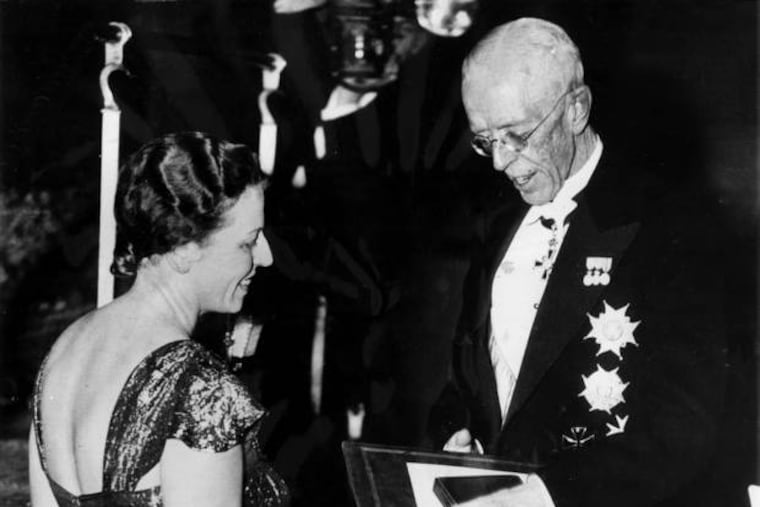In a time of racial division, remembering the multicultural focus of Pearl S. Buck
The Nobel Prize-winning author was an advocate for gender equality and civil rights.

Recently, my wife and I visited the Pearl S. Buck House in Perkasie — the former residence and estate of Buck, the first American woman to win the Nobel Prize in Literature, in 1938, and the second American woman to win a Nobel.
Buck is best known for writing the novel The Good Earth, which was also awarded the Pulitzer Prize in 1932. The book was a rarity for the time — it provided the West with a compassionate, introspective glimpse into the world of Chinese peasants and their struggle to survive, in an easily readable style.
Born on June 26, 1892, Buck had been taken to China at 3 months of age by her parents, who were Southern Presbyterian missionaries, and grew up among the Chinese. She was fluent in Mandarin and knew what it was like to be a white foreigner in Asia.
Despite worldwide praise for a transcultural novel that can be created only by one who is both an insider and outsider in two distinct cultures, Buck was ridiculed by the poet Robert Frost, who stated after her Nobel win that “If she can get it, anyone can.” It is tempting to speculate whether jealousy, elitism, or misogyny factored into his disparaging comment, given the norms of those times.
What struck me while taking a guided tour of her house — she lived there from 1934 to 1969 — was her collection of books. There were two large libraries in this renovated 1825 farmhouse, with volumes of Dickens (apparently her favorite), Eastern and Western political thought, modern and ancient history, along with medical and science monographs. The entire works of Balzac were in her bedroom. I recalled a quote attributed to Oscar Wilde (but which was probably uttered by the Unitarian Minister Charles Potter): “It is what you read when you don’t have to that determines what you will be when you can’t help it.”
One would think that Buck should be the top hit on a Google search for “First American Woman Nobel Literature” — but sadly she is not.
She is hardly to be found in any searches about Asian American Pacific Islander Heritage Month despite her bold efforts to condemn the heinous internment of Japanese Americans during World War II. She was an early advocate for fairer immigration laws for mixed-race children born to American servicemen and Asian women.
Her love for the Chinese people — coupled with unbridled criticism for the authoritarian government of Mao Zedong — earned her the contempt of the Chinese Communist Party, which denied her a visa when Richard Nixon visited China in 1972.
She was proactive from the 1930s regarding equality for women and civil rights for African Americans, leading her to be on a watch list of J. Edgar Hoover’s FBI. Ironically, Hoover felt her humanistic social and political views might be subversive and anti-American. Her genuine respect for other cultures is evidenced by her advocacy of missionary work without proselytization, leading to accusations of heresy by some members of the Presbyterian Church, of which she was a member.
As I reflect on the unfortunate escalation of racial divisiveness in our country, I also remember Pearl S. Buck, a white Christian woman who spent her formative years in China and became a champion for Asians, Black people, and women at a time when such positions were unpopular and not without personal risk. Following in the footsteps of this perspicacious woman regardless of our gender, race, or ethnicity provides a path toward redemption. She should not be forgotten.
Raman L. Mitra, M.D., Ph.D., is the director of the Electrophysiology Laboratory at North Shore University Hospital in Manhasset, N.Y. He is a Pennsylvania native and a graduate of the Perelman School of Medicine.